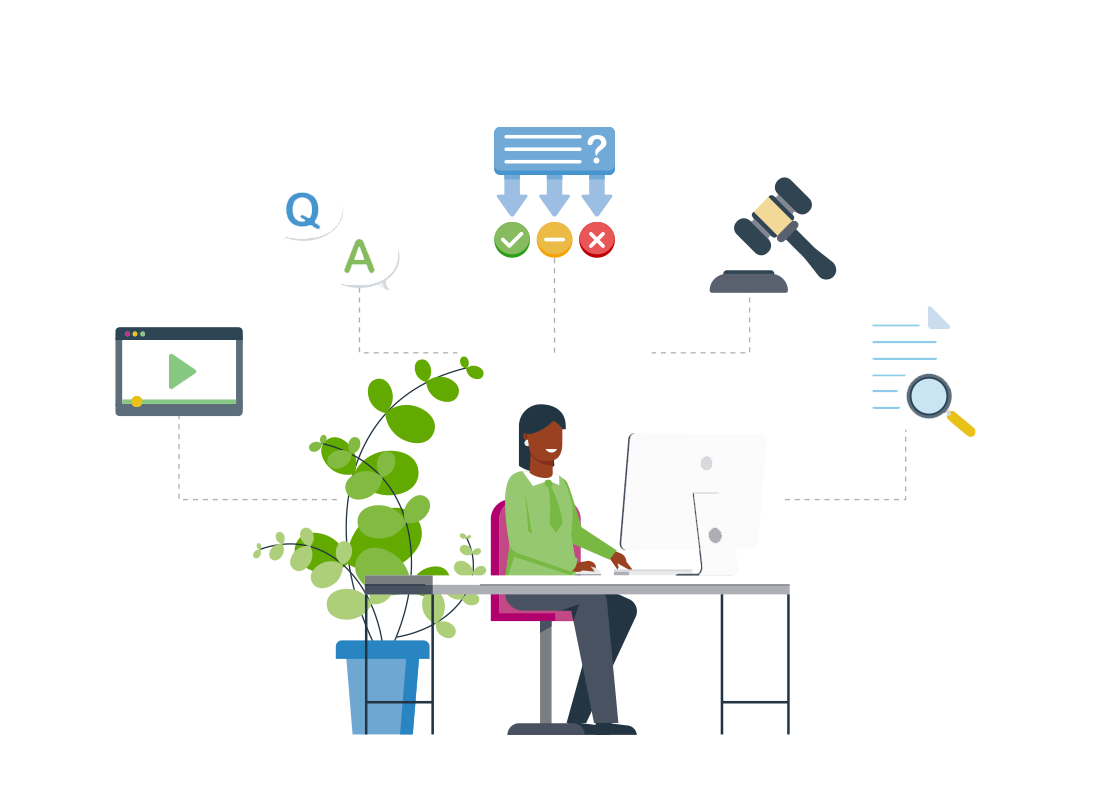Imagine that you have one hour to save the world by finding a hidden treasure in the Forest of Dark Creatures. On your way, you will come across riddles you will need to solve that will give you hints as to where the treasure is located. Good luck – let’s start!
See what we just did? You might have been curious about what happens next and wanted to play. This story is a gamification example that was taken from a workplace training module. Gamification can be a powerful tool that can help you create better learning. So, what actually is gamification and why do you need it?
Let’s first talk about why we like playing games. Play is defined as any intrinsically motivated activity that we do because it’s fun. Through play we can easily learn new things while feeling good. That means, if learning is fun, we essentially learn better.
How We Learn
A bit of science: Research shows that for learning to be effective, our brain needs stimuli to release dopamine. Dopamine is necessary for the amygdala (the part of your brain where emotions are given meaning) to continually sort incoming information into the appropriate parts of the brain. That is, the actual learning process.
When bored, we stop learning because our brain no longer receives stimuli and therefore stops releasing dopamine. Boredom actually causes the amygdala to stop in a similar way to how stress does.
In summary, to continue learning, we must not get bored. Or in other words, learning needs to be interesting to be effective.
How Gamification Works
Gamification is the application of game-design elements and principles in a non-game context – our learning environment – to influence behaviour. The goal is to motivate and engage learners by capturing their interest and making the experience fun.
Gamification breaks up the elements that make up a game to utilise some of them in an eLearning context. Think of a board game: The board is the context (or story), dices provide an element of chance, players are the social component, activity fields or cards represent challenge and unpredictability, and points or levels can add a form of competition to the game.
Game-design elements you can use to gamify your eLearning experience include the following:
Progress Bars
The progress bar is probably one of the most effective tools. People are goals driven. A progress bar encourages the learner to complete their learning journey and provides them with a sense of accomplishment.
Badges
Badges are a form of rewards that also symbolise achievement for the learner. They can be used to acknowledge the successful completion of specific topics in the learning journey. They may also encourage the learner to even greater achievements.
Scores
Scores are important because they provide the learner with feedback on how well they are doing and how much effort they must put into their performance to improve.
Branching
Branched scenarios are a great way of giving the learner control to personalise their own learning journey. It provides the learner with a sense of choice, challenge and consequence.
Storytelling
Storytelling can create curiosity and mystery for example. It allows the learner to connect with the content on an emotional level and fully immerse with it.
Avatars
Avatars and characters can be great at guiding learners through a learning journey. They add the engagement factor that also helps learners connect emotionally with the content and feel a sense of active communication.
How to get started with gamification
There is of course no one-size-fits-all approach in gamification. Make sure to assess whether adding game elements to your project is the right tool. The ADDIE model can help you in finding the best strategy.
When applied in the right way, gamification can be highly beneficial and effective. Here are some benefits:
-
Increases learner engagement and motivation
-
Holds learner's attention
-
Motivates learner to become actively involved
-
Fun and interactive
-
Relevant and relatable
-
Challenging and rewarding
-
Improves knowledge absorption and retention
-
Enhances the overall learning experience
Game on!

.png)

